Crafting a clear and engaging presentation in Google Slides requires more than just understanding the basics; it’s about mastering the nuances, such as grouping objects, to communicate your message effectively.
In this guide, we’ll provide practical steps and insider tips to enhance your skills in grouping objects in Google Slides, ensuring your presentations are not only visually appealing but also highly impactful.
Have you ever found yourself painstakingly trying to align multiple images, shapes, and text boxes on a presentation, only to accidentally move one and disrupt the entire layout?
It’s a common struggle. Crafting the perfect Google Slides presentation, with every element meticulously placed, can feel like assembling a house of cards.
(Especially if you have a lot of background detail or other design elements in a slide.)
One wrong move and the visual harmony you worked so hard to achieve comes tumbling down!
It gets even more frustrating when you’re working against the clock, with a looming deadline or an impatient audience waiting.
The need for a seamless way to manage multiple objects on your slides clearly needs to be addressed, but how can you overcome this challenge and ensure your presentation is both visually appealing and efficiently crafted?
This is where knowing how to group things in Google Slides comes in handy.
Grouping objects in Google Slides is a straightforward process. Select the objects you wish to group by holding down the 'Ctrl' or 'Command' key and clicking on each one. Right-click on one of the highlighted objects and select "Group" from the dropdown menu.
This feature is useful for organizing and formatting multiple elements efficiently, enhancing the overall design and coherence of your presentation.
Knowing how to group objects in Google Slides efficiently is more than just a time-saver—it’s a step toward becoming a more adept marketer.
The ability to convey information clearly, create visually appealing content, and adapt quickly to changes can set you apart from the competition.
Mastering tools like Google Slides allows you to present your ideas, products, or services in a more organized and compelling manner, capturing your audience’s attention and leaving a lasting impression.
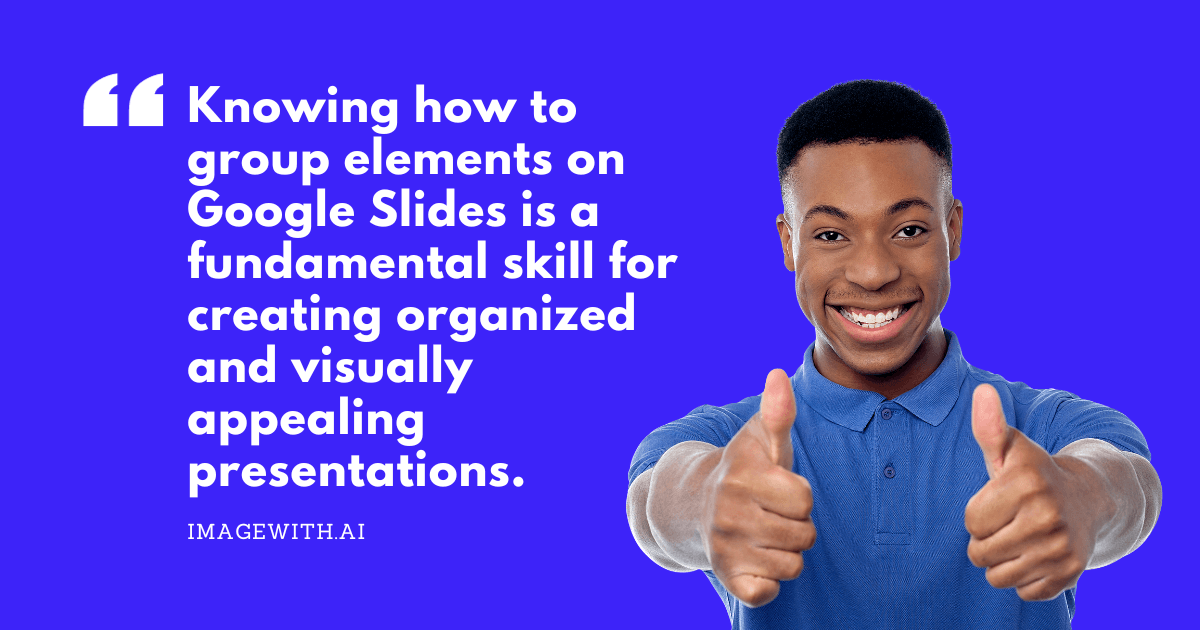
A Step-By-Step Guide on Grouping Elements in Google Slides
Ready to get started? Grouping objects in Google Slides is a straightforward yet impactful skill that can significantly enhance your presentations.
This guide will walk you through each step of the process, ensuring you can efficiently organize your slide elements.
1. Open your presentation and navigate to the slide.
If you haven’t already, begin by launching your Google Slides presentation and navigating to the slide where you intend to group objects together.
This step sets the foundation for the grouping process, allowing you to focus on the elements you wish to organize.

2. Select the objects.
Start the selection process by clicking on the first object you aim to group.
Hold down the 'Ctrl' key (Windows) or 'Command' key (Mac) and, while maintaining the key press, click on each additional object you wish to include in the group.
This action highlights all the objects you intend to group together.
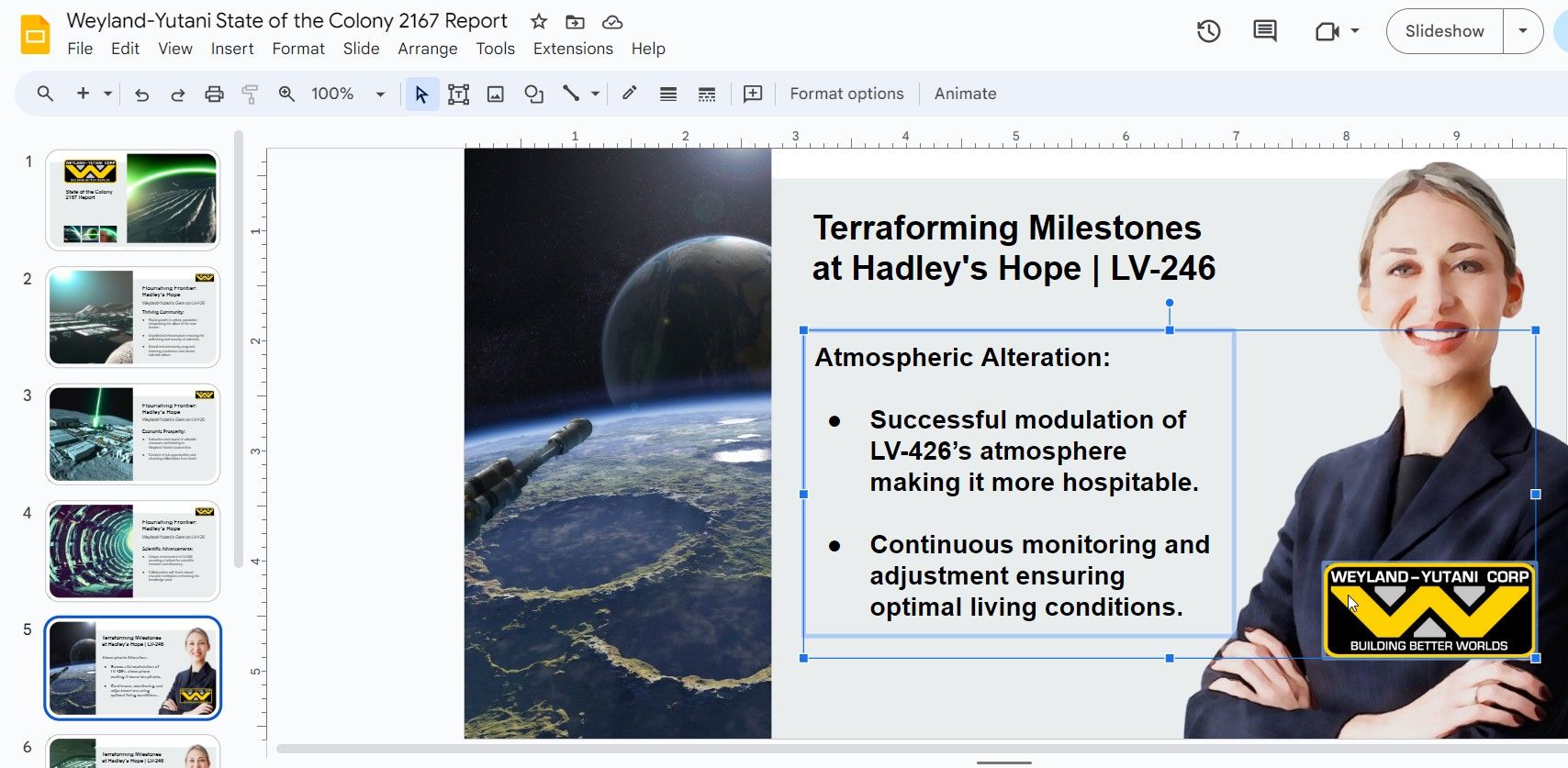
3. Group the selected objects.
After selecting all the desired objects, right-click on any one of them to reveal a dropdown menu.
From this menu, choose the "Group" option. This action will group the objects together, enabling you to move or format them as a cohesive unit, so you don’t need to fiddle around as much as you did in the previous step.

4. Adjust and format the grouped objects.
Once the objects are grouped, you gain the ability to adjust their size, position, and overall formatting easily.
This capability is especially useful for maintaining a consistent layout and design throughout your slides, contributing to a more polished and professional appearance.
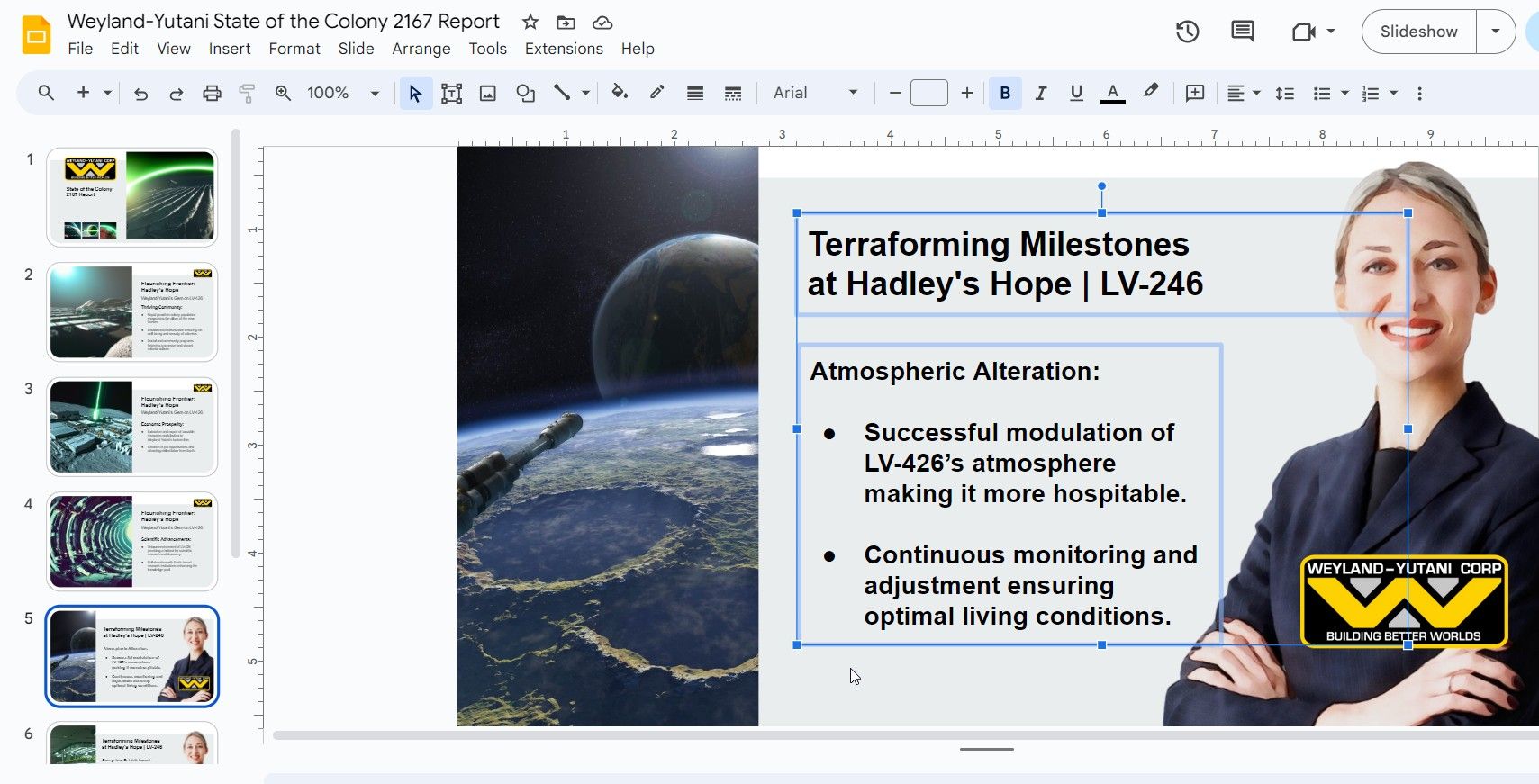
5. Ungroup the objects if needed.
If you need to make adjustments to individual objects within the group, you also have the option to ungroup them.
To do this, right-click on the grouped objects and select "Ungroup" from the dropdown menu. The objects will then revert to being individual elements, allowing for separate modifications as needed.
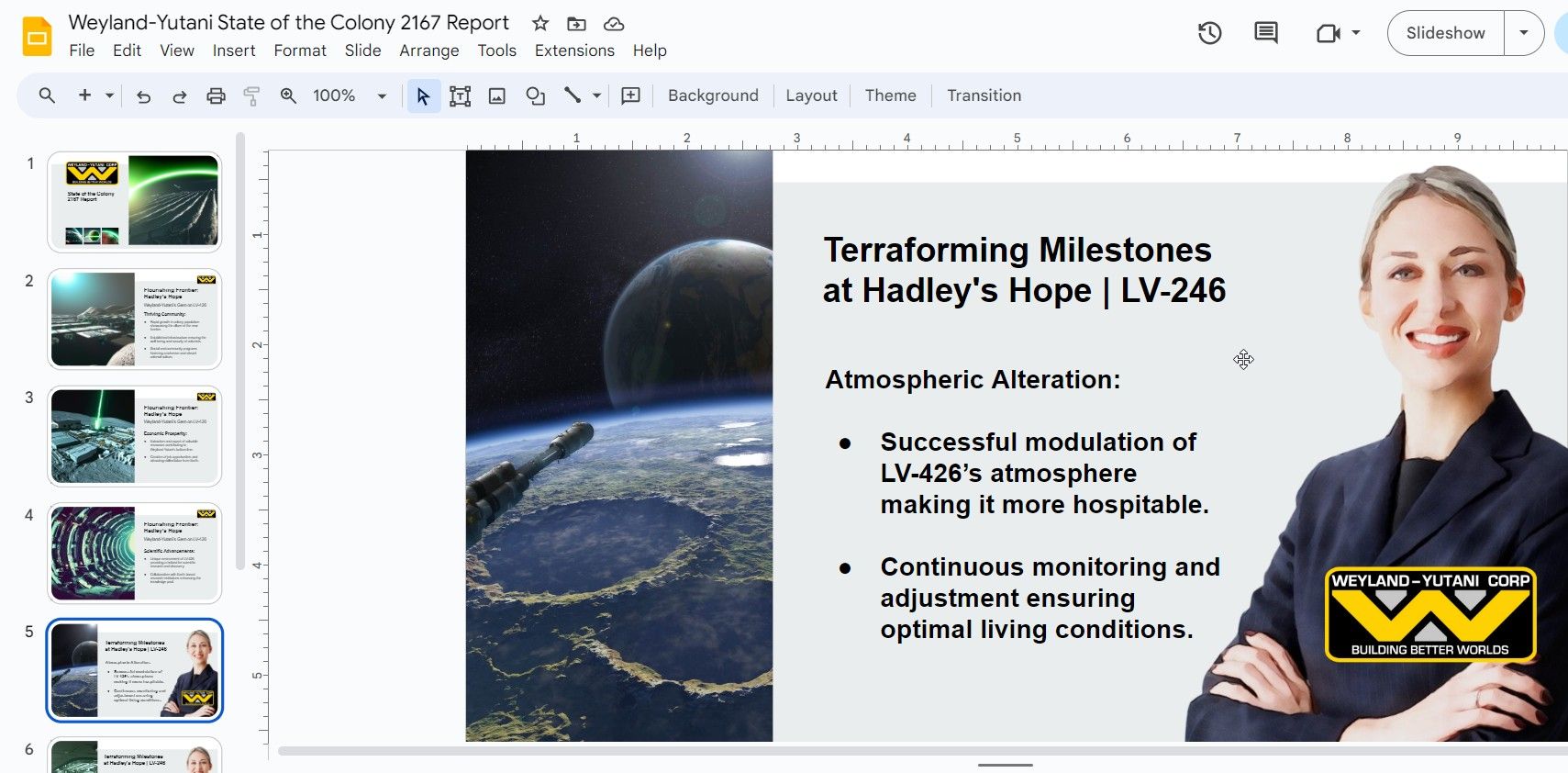
6. Grouping different elements.
It’s important to remember that Google Slides allows you to group different types of elements together, such as text boxes, images, and shapes.
The process for grouping varied elements remains consistent: select the elements, right-click, and choose "Group." This versatility enhances your ability to organize and structure your presentation how you like it.
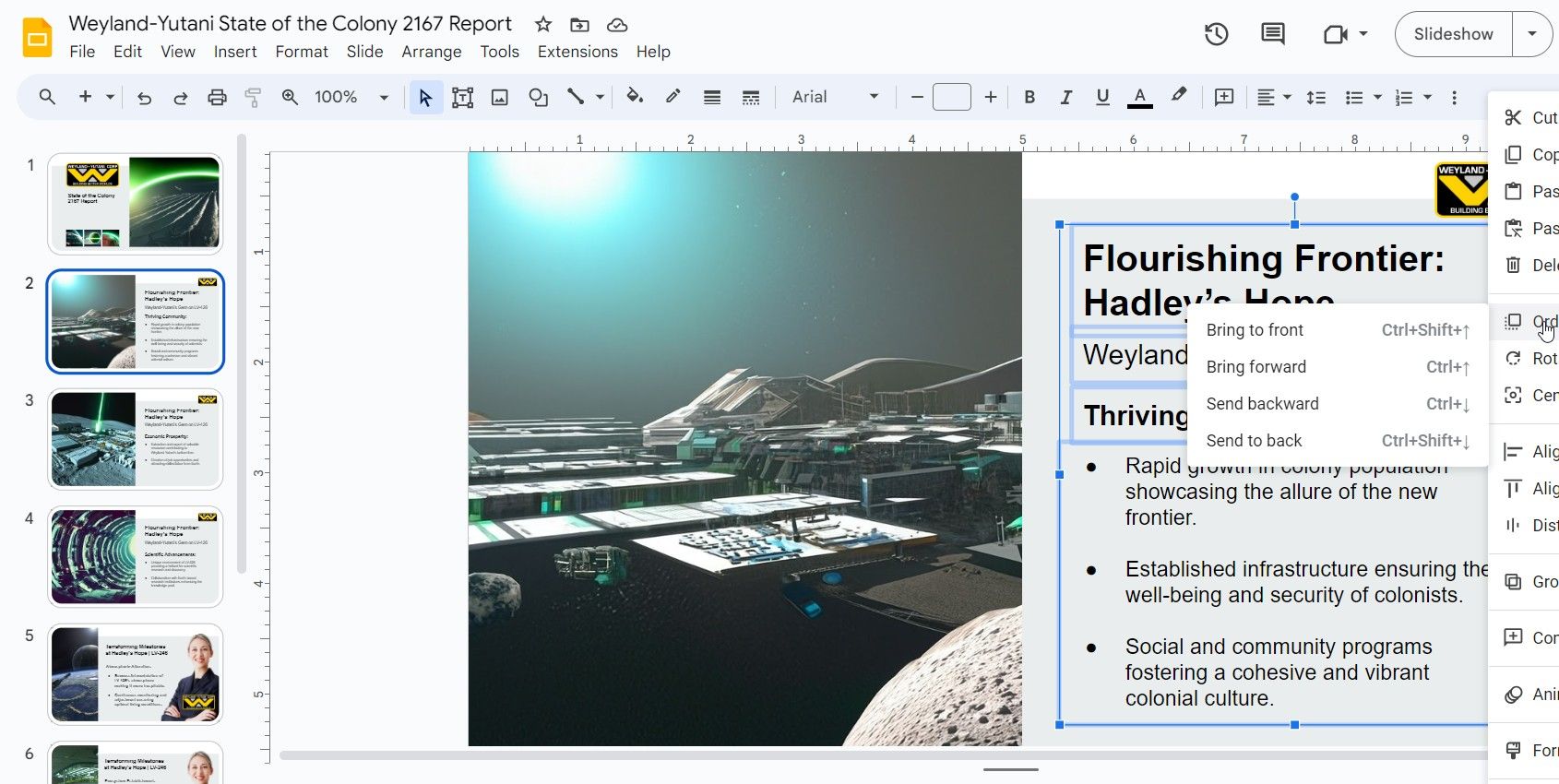
Hopefully, you've pulled it off easily enough.
Use this technique to organize the elements on your slides and enhance the visual appeal and coherence of your presentation.
Whether grouping similar objects or a mix of different elements, this method is a valuable skill for creating professional and impactful Google Slides presentations.
Useful Reminders, Tips, and Tricks When Grouping Things in Google Slides

Leverage keyboard shortcuts.
Keyboard shortcuts are your best friend when working with Google Slides.
After selecting the first object, for instance, hold 'Shift' and click on additional objects to select them simultaneously. This can save you a significant amount of time, especially when dealing with multiple elements.
Align grouped objects.
Once your objects are grouped, ensure they are aligned properly. Use the alignment tools available in the toolbar to align the grouped objects to the left, right, center, top, or bottom.
This gives you a neater and more organized appearance of your slide.
Apply consistent formatting.
Consistency is key in professional presentations. Once you’ve grouped objects, apply consistent formatting such as font, color, and size to them.
By doing so, you create a more harmonious and visually appealing look across your slides.
Use the “Arrange” feature.
The "Arrange" feature in Google Slides is a handy tool for managing layered objects.
If you have multiple objects grouped together, use this feature to bring an object to the front or send it to the back, allowing for better control over the slide’s layout.
Lock your aspect ratio when resizing.
When resizing grouped objects, hold down the 'Shift' key to maintain the aspect ratio. This prevents distortion and ensures that the objects retain their original proportions.
Practice ungrouping and regrouping.
Familiarize yourself with the ungrouping and regrouping process.
This allows you to make individual adjustments to objects within a group and then regroup them with ease, offering flexibility in editing your slides.
Create Better Design Elements for Your Slide Presentation with Outcut in ImageWith.AI
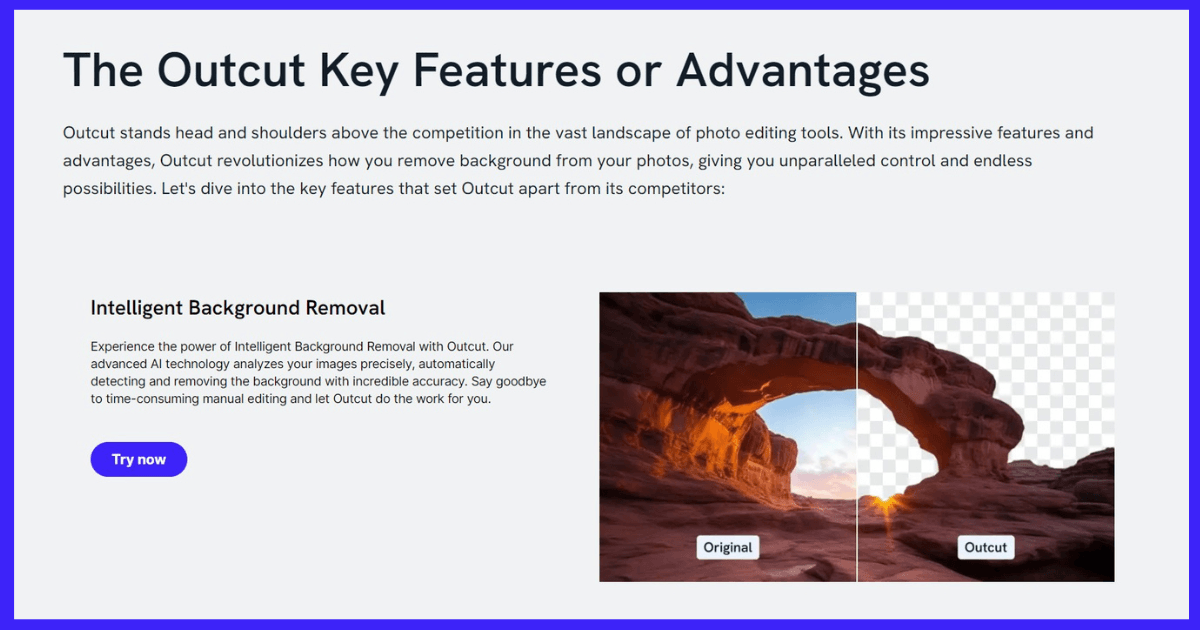
The visual appeal of your slides can make a significant difference in engaging your audience and conveying your message effectively.
This is where **Outcut (by Imagewith.ai) **comes into play. Outcut is a cutting-edge tool designed to help you elevate the design elements of your Google Slides presentation by enabling you to create stunning, transparent background images.
-
Enhance visual appeal. With Outcut, you can seamlessly remove backgrounds from images, allowing you to incorporate cleaner and more professional-looking visuals into your slides. This enhancement contributes to a more polished and aesthetically pleasing presentation.
-
Easy integration with Google Slides. Outcut’s user-friendly interface and compatibility make it a breeze to integrate with Google Slides. Simply create your transparent background images using Outcut and insert them directly into your slides for an immediate design upgrade.
-
Encourage further customization and creativity. Outcut offers a platform for creativity and customization. Experiment with different images, explore various design elements and utilize transparent backgrounds to layer visuals, create collages, and craft unique slide compositions.
-
Save time and bandwidth. Designing visually compelling slides can be time-consuming, but Outcut streamlines the process. The tool’s efficiency in creating transparent background images saves you time and effort, allowing you to focus on the content and delivery of your presentation.
-
Stand out from the crowd. In a world where presentations are ubiquitous, Outcut provides you with the means to stand out. By incorporating sophisticated and well-designed images into your Google Slides, you distinguish your presentation from the rest and leave a lasting impression on your audience.
Go ahead and leverage the capabilities of Outcut in ImageWith.AI. You can not only enhance the design elements of your Google Slides presentation but also elevate the overall impact and effectiveness of your communication.
Whether presenting to a client, a team, or a larger audience, Outcut empowers you to create visually striking presentations that resonate.
Conclusion: A Final Word on How to Group Things in Google Slides
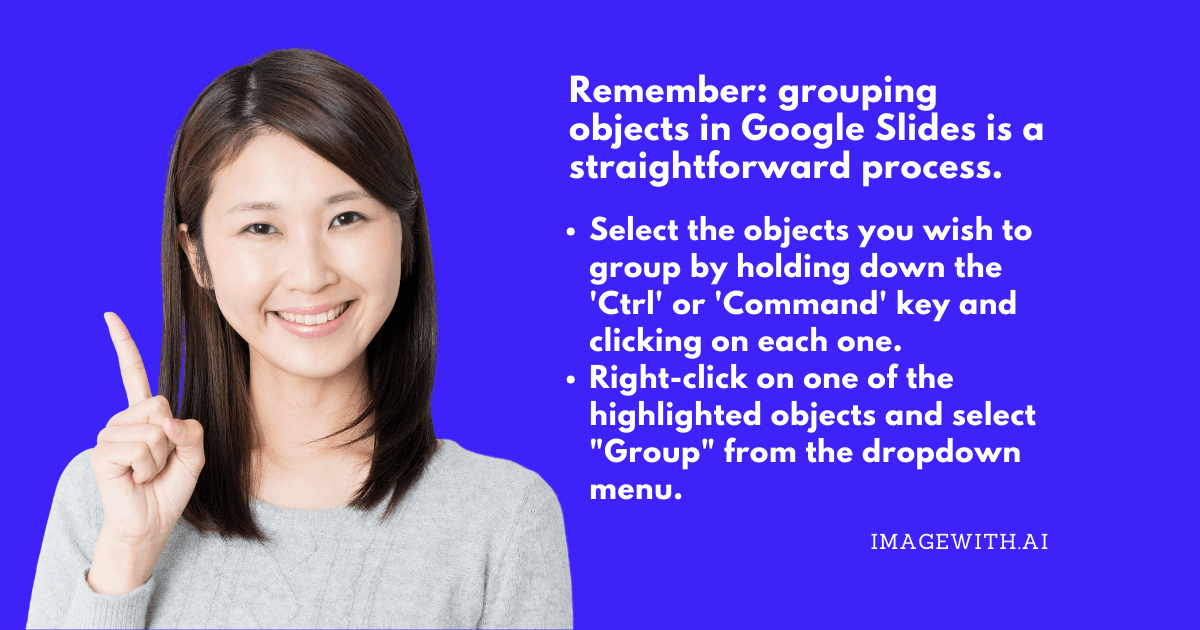
Mastering the art of grouping objects in Google Slides and enhancing your presentations with superior design elements, like those provided by Outcut in ImageWith.AI, are skills that can significantly elevate your communication and marketing efforts.
As we wrap up this guide, remember that practice is key. Continue to experiment with grouping different elements, explore various use cases, and integrate high-quality, transparent images to make your slides more compelling.
In your journey to becoming a more proficient Google Slides user, don’t hesitate to explore other functionalities and design possibilities.
Keep practicing, stay creative, and watch as your presentations evolve from good to great, leaving a memorable impact on your audience.






